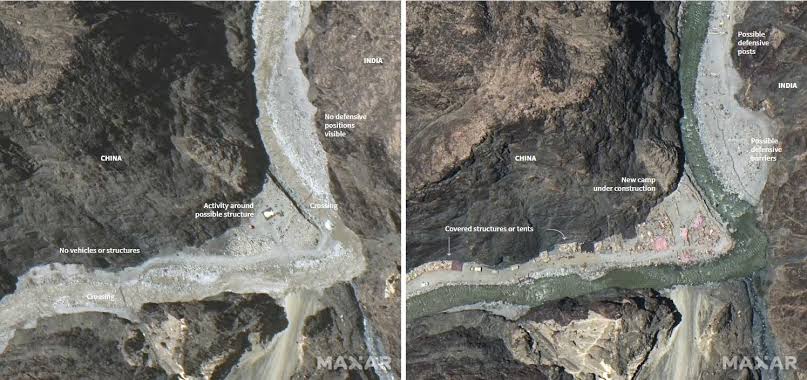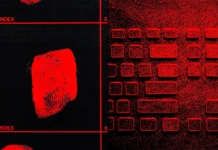
The Chinese government has now started construction near the conflicted Himalayan border that has been and still in a clash with India, the latest satellite images show, this may spark further stress between the two nuclear powers.
The Galwan Valley has been a controversial part for three decades. The dispute between the two nuclear-powered neighbors has engulfed many lives, 20 Indian military troops were killed amid the clash earlier this month, with Chinese troops casualties however, China has not confirmed the news of its military fatalities.
The images were captured by the satellite on June 22, from the US-founded space technology Agency, Maxar. Fresh images were revealed at the time when both the countries have been in talks to combat the clashes.
The previous month, Galwan Valley appeared to be free from signs of any constructive infrastructure in aerial images, Reuters reported.
However, news over the build-up by Chinese officials near the disputed area was not revealed officially by two of the governments, China and India.
On June 15, China-India conflicts came to the surface over the Himalayan Territory of Ladakh, Galwan Valley, following that, both the nuclear powers signed various bilateral consensus to bring peace between two nations and tried to resolve this matter without any conflict.
The Latest Satellite Images Show Chinese Construction
A senior Indian defense analyst, Ajay Shukla made a tweet regarding fresh photographs saying, within the boundaries of Galwan Valley, A huge Chinese camouflaged camp can be seen on the Line of Actual Control (LAC), installed 1.5 kilometers into the Indian territory.

The satellite image that was released in May showed there were no structures in the conflicted area near where the clashes happened between the two strong neighbors.
Satellite fresh imagery shows the build-ups are inclusive of camouflaged camps, and after a little away there is another under-construction camp that can be seen with walls. On Indian Sides, the defensive barriers can be observed in the latest satellite shots that were invisible in May shots.
Amid normalcy in the effort of avoiding conflict, Beijing has been consistent to blame the Indian Military for accelerating the clash, on the other side India denied the accusation and reported Chinese troops attacked Indian soldiers.
Indian government claims the area where Chinese build-ups have appeared is on its side while the Chinese have a contrasting stance over the area as it claims the Galwan Valley area belongs to its territory, which is situated at around 4,300 meters.
Galwan Valley Conflicts:
The Himalayan border conflict is for three decades between China and India. Both the countries fought over the disputed border in 1962 and 1972, but the matter remains unresolved to date.
According to the media outlet, conflict again sparked on June 15 between the military forces of both the countries, that left many Indian troops dead with 76 injured. It harmed Chinese forces too but the Chinese government neither denied nor accepted the fatalities of its soldiers.
Other than this, the conflict took place without the usage of weapons as it was declared impermissible to deploy arms and ammunitions according to consensus fixed between the two nuclear powers in 1996.
Former Indian Army Chief, Deepak Kapoor stated, “With China, there are trust issues, they could not be trusted until they come up with documentation which clearly says China is ready to pull back, verbally there will be no value of consensus, as China has breached the agreement in recent time. Until then the armed forces will remain alert.”
China-based Global Times has published an article on Wednesday, in which a Chinese Journalist, Hu Xijin, said, “the People’s Liberation Army has taught a lesson to the Indian Army who always misinterprets Chinese people’s determination.”
Moreover, he warned the Indian Army in a post on Twitter never to mess with PLA, they would otherwise teach Indian people a heavier lesson for life.












[…] Anti-China sentiment has surged in India on account that earlier this month when conflicts between the two nuclear-power nations caused 20 Indian troops dead. […]
[…] in heat pumps, says the columbiform bird. each of those would scale back the demand for energy. And Cornelius points out that we’d like to form different sorts of renewable energy […]